Beavers have been a highly valued animal throughout the centuries, admired for their fantastic engineering skills. These industrious rodents build huge dams that alter their environment to suit their needs and provide essential resources to other species in their ecosystem. Beaver dams are impressive feats of engineering and a crucial part of the natural world.
In this article, we explore beaver dams and how they affect ecosystems, from their adaptive behaviors to their benefits.
Why Do Beavers Build Dams?
In short, beavers build dams to protect themselves from predators, which can be challenging for them due to their awkward body shape and short legs. Beavers are large rodents that weigh between 40 to 80 pounds and are vulnerable on land. But when they’re in the water, beavers are nearly invincible, with excellent swimming skills and the ability to hold their breath for up to 15 minutes. By creating a pond through damming, beavers can hide from predators and get closer to their food sources, such as trees, water lilies, and cattails.
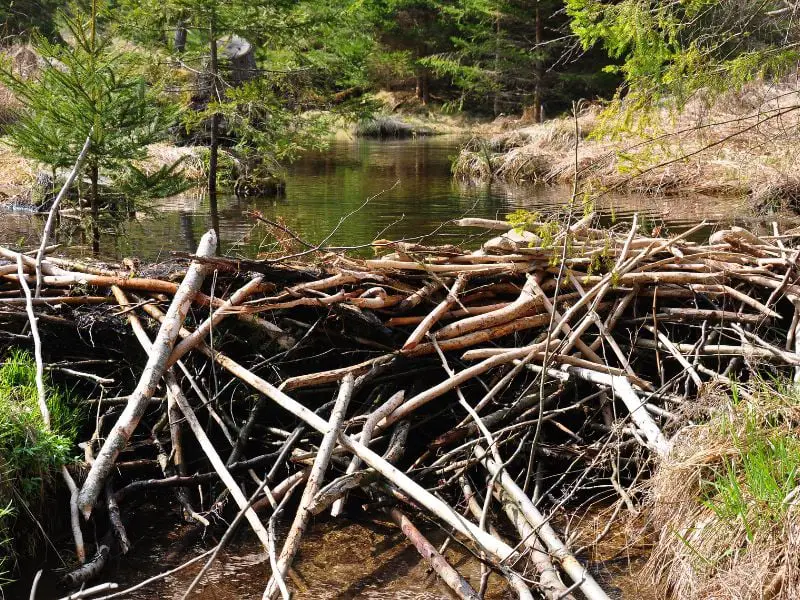
How Do Beavers Build Dams?
Beavers build their dams using a combination of instincts and learned skills. They use their sharp teeth to gnaw through tree trunks and branches, which they then drag and pile onto the bottom of a river or stream. As the beavers add more and more material to the pile, the dam becomes stronger and more effective at holding back water.
Beavers also use mud and rocks to reinforce and seal the dam. They collect mud from the bottom of the river or stream and mix it with twigs and other debris to make a plaster-like substance that they use to fill in gaps and holes in the dam. They also use rocks and other heavy objects to weigh down and secure the structure.
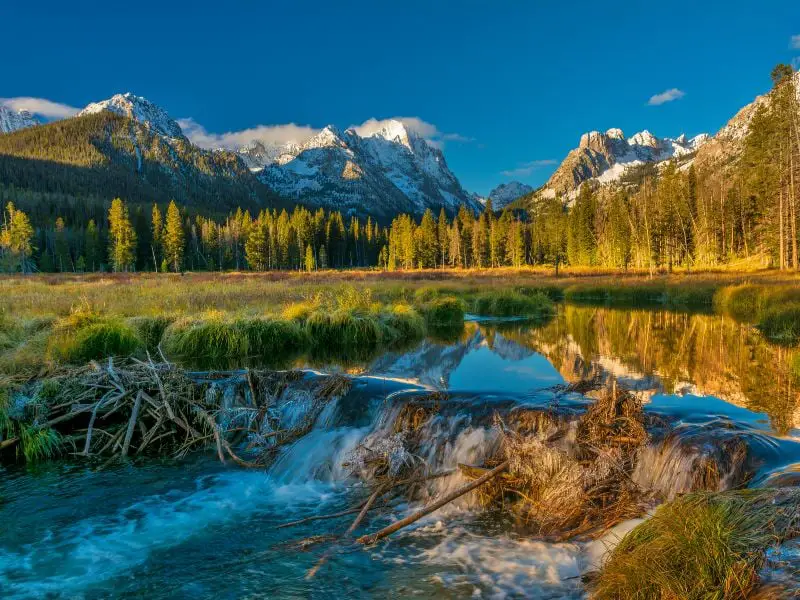
The beavers’ engineering efforts can have a significant impact on their environment. The dams create ponds and wetlands, which provide a habitat for various plants and animals. The slow-moving water behind the dam also allows sediment to settle, making fertile soil supporting vegetation. Overall, beavers’ construction of dams is a remarkable example of how animals can shape and transform their environment to suit their needs.
Beaver Dams Are Beneficial to the Ecosystem
Beavers are more than just cute, furry creatures; their dams are a game-changer for many species. Beaver dams slow down water and turn simple streams into thriving wetland ecosystems, providing ideal habitats for many species.
Beavers are also keystone species because they play a significant role in the environment. By slowing down water, some of it gets buried in the soil where plant roots can access it during drought. This helps keep vegetation lush, and beaver complexes are resistant to wildfires.
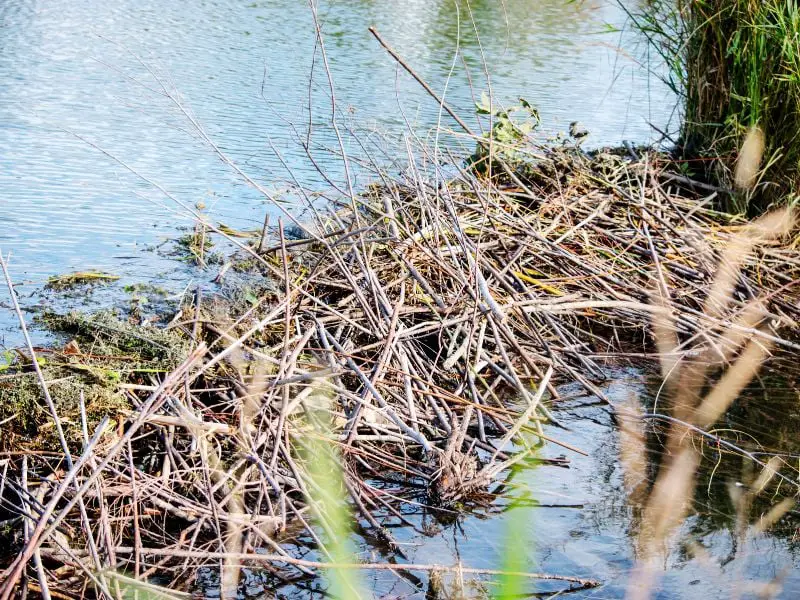
Moreover, their vegetation can draw greenhouse gas from the air and reduce flood damage. Beaver-linked data shows they are well-suited to survive changing climates and accomplish some of the climate change adaptation work we have been trying to achieve ourselves. Scientists suggest that we work with beavers, other ecosystem engineers, and keystone species to make more progress in restoring ecosystems and building resilience to climate change.
Adverse Effects of Beaver Dams
Beavers are generally good for the environment and can do wonders for wetland ecosystems. However, in some cases, their dams can cause some localized problems.
In areas where beavers are abundant, they may need to manage their population to prevent certain fish from going extinct, avoid unintended changes to ponds and streams, and prevent damage to human-made dams. Despite these challenges, the overall benefits of beavers in the environment make them valuable species to work in the quest for a healthier planet.
Here are some problems that beaver dams can explicitly cause.
1. Fish Migrations
Certain fish migrate between large lakes and breeding grounds, and if beavers build dams along their migratory routes, these fish may need help. This can affect their reproduction and reduce their numbers.
2. Flooding
Beavers build dams to create areas of standing water, which can cause flooding problems in some areas. If it hasn’t rained in a while and the water’s running low, a beaver dam might seem like a good solution to redirect water to low-lying areas. But that could actually cause some serious problems – it can mess with the structure of the area and completely change the local ecosystem. And when it starts raining, things can get even worse.
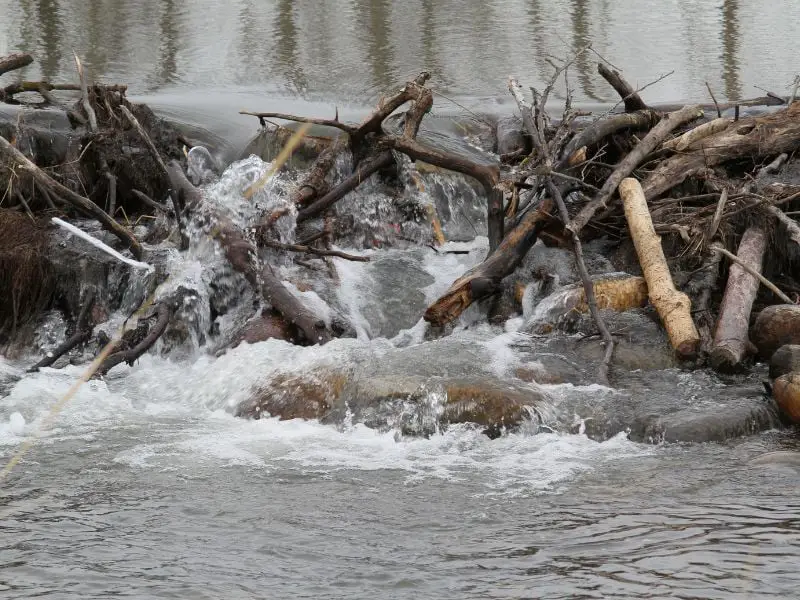
3. Water Temperature
Beaver dams can affect water temperature downstream from the dam, cooling it by nearly 5 degrees Fahrenheit on average, according to KingCounty.Gov. While this can sometimes be viewed positively, it can also impact the types of fish and other wildlife that can live downstream of beaver dams.
What Are the Consequences if Beavers Go Extinct?
Beavers are keystone species and play a vital role in shaping their ecosystems. Without them, things would be different. Areas that beavers usually maintain would become overgrown with trees, creating less space for new ones to grow.
The aggressive plants would take over the area, making it overgrown within just a few seasons. This would result in a decrease in species diversity. Many species, especially birds, depend on beavers and their dams; without them, they would have to either adapt or face extinction.
The Importance of Beavers for Wetlands
Beavers play a crucial role in the maintenance and preservation of wetlands. Here are some important reasons why:
1. Wetland Creation
Beavers are known to construct dams that create ponds and wetlands. These wetlands become essential habitats for a variety of aquatic species, including fish, amphibians, and waterfowl.
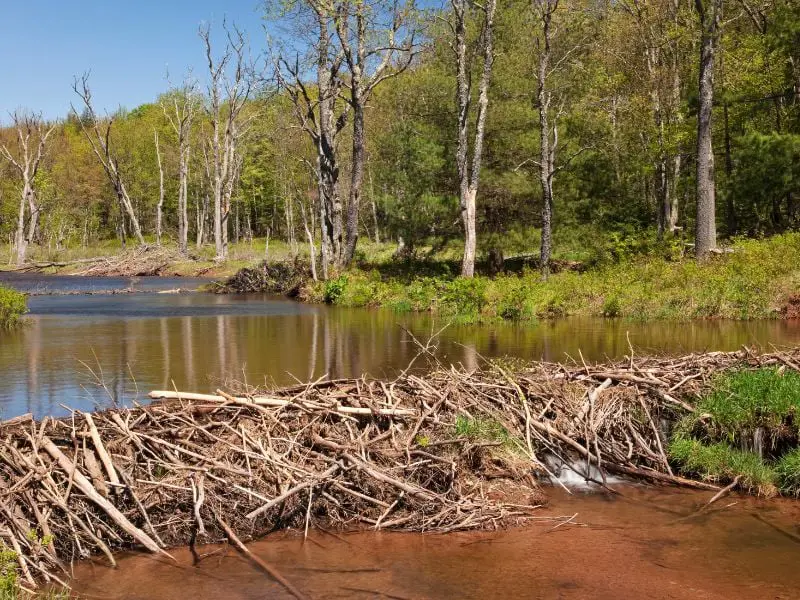
2. Water Storage and Flood Control
Beavers help regulate water flow by creating dams that store and release water slowly. This can help prevent flooding downstream during periods of heavy rain or snowmelt.
3. Nutrient Cycling
Beavers help cycle nutrients by building dams that create wetlands, which are rich in organic matter. As the water flows through the wetlands, the organic matter is broken down, providing nutrients for the plants and animals that live there.
4. Carbon Storage
Wetlands created by beavers are important carbon sinks, storing large amounts of carbon in the form of organic matter in the soil.
5. Erosion Control
Beavers’ dams help prevent erosion by slowing down the flow of water and trapping sediment. This can help prevent soil erosion and loss of habitat for aquatic species.
6. Biodiversity
Wetlands created by beavers provide habitats for a wide variety of plant and animal species. By creating wetlands, beavers help increase biodiversity in an ecosystem.
Ready to go on a wild ride through the world of biodiversity? Our guide has got you covered with a fun and informative mix of topics. From answering the question ‘what is biodiversity?‘ to exploring the threats facing our planet’s rich variety of life, we’ll take you on a journey through the wonders and challenges of nature. And for the ultimate adventure, we’ll show you the top hotspots in biodiversity around the world.
Overall, beavers are crucial for the health and sustainability of several ecosystems. Their impact is felt not just within the wetlands themselves, but also downstream, where they can help prevent flooding and erosion.
How Many Beavers Can Live in a Dam?
There’s no exact number of beavers that can live in a dam and lodge. It depends, and it can range from just a couple of beavers to around 10. But usually, only one family of beavers will call an area home, and they’re pretty territorial – they’ll even get into fights with other families that try to move in.
It’s cool because one dam can last for generations of beavers, and the lodges can stay standing as long as there are beavers in the area. For instance, even though beavers typically live for about eight years, there’s a dam in Alberta that was supposedly built way back in 1970 and is still going strong today.
What Can We Pick From These Natural Engineers?
Beavers are some skilled dam builders! Their small-scale dams can teach much about dam building, including its pros and cons. Plus, beaver dams are great spots for observing the growth of wetland ecosystems in areas that used to be somewhat deserted for wildlife.
Unlike human-made dams, which often end up displacing people and causing ecological harm, beaver dams do the opposite. They attract more species to come live in the newly-formed wetlands. It’s a clear example of how nature’s ways are often better than ours.
Bottomline
Beavers are one of nature’s top engineers for a reason. Their dams are remarkable feats of engineering and play a significant role in shaping ecosystems. Beaver dams slow down water and turn streams into thriving wetland ecosystems, providing an ideal habitat for many species. They are also keystone species, meaning they play an essential role in the environment.
While some localized problems may be associated with their dams, the overall benefits of beavers in the environment make them valuable species to work in the quest for a healthier planet. With beavers, species diversity would decrease, and ecosystems would become overgrown, making it easier for new plants to grow.
Working with beavers and other keystone species can help restore ecosystems and build resilience to climate change, making them an essential part of the natural world.

